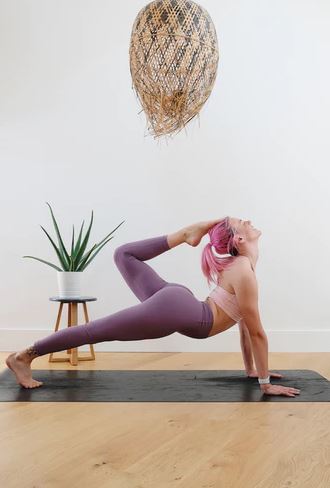- Get link
- X
- Other Apps
How to start doing yoga teacher training in Rishikesh? 11 things every beginner should know
The word yoga has two main meanings, as Om Yogpeeth explains in his book of yoga teacher training in course Rishikesh.
The first is union - both with oneself and with the cosmos - and the second is the techniques or methods to achieve this union.
What do I need to know before practicing yoga teacher training in Rishikesh?
People come to this discipline with very different expectations, and all can obtain multiple benefits by practicing yoga on a regular basis.
By adapting the practice, people of all ages and physical conditions can do yoga, including children, the elderly and pregnant women.
Practicing yoga teacher training in Rishikesh will improve your physical condition, spinal flexibility or lung capacity. It also promotes better concentration, quality rest or relaxation, emotional control and brain plasticity.
People come to yoga with very different expectations. "The goal is set by the practitioner himself and yoga never asks you to believe in anything except what you experience for yourself," says Danilo Hernández, noting that it can be a complementary therapy for people who are ill, a way to deepen self-knowledge or the path to personal growth.
If you're lost and don't know where to start with classical yoga, there are some key tips you can consider.
11 tips to keep in mind before you start practicing yoga teacher training in Rishikesh
- Don't practice yoga on a full stomach: any type of physical activity should preferably be practiced with digestion already done. Ideally, yoga should be practiced on an empty stomach. Otherwise, you may experience discomfort such as heaviness, dizziness, nausea, acid reflux or lack of energy. If you have a workout soon, eat lightly.
- Professional guidance is especially important for beginners: both to learn how to breathe and to perform the asanas or postures without hurting yourself, to avoid injury and to get the most out of the practice, go to a specialized center or take classes with a yoga teacher.
- The basic equipment you need to have on hand to do yoga at home is a yoga mat. Yoga blocks, belts, meditation cushions, blankets or a bolster can be very helpful.
- Wear comfortable, lightweight, breathable clothing for your yoga teacher training practice, which requires maximum comfort. The more demanding postures can make you sweat, so heavy sweatpants are not recommended. Ideally, you should wear linen or thin tights and T-shirts.
- During relaxation, your body temperature drops, so you should have a thicker sweatshirt and socks on hand, as well as a blanket to cover up in the colder months.
- All parts of yoga are equally important to achieving balance and alignment between your body, mind and soul - also between what you say, what you do and what you think. Don't be unwise to give more priority to the physical part, otherwise it will remain a mere gymnastics. Behavior, meditation or breathing - pranayama - are equally important in this discipline.
- Pay special attention to breathing in your first yoga teacher training classes: The most difficult thing to learn in the beginning of yoga is to breathe correctly and to synchronize breathing in and out with the postures. In Sanskrit, prana translates to energy or breath, while ayama means regulation, control or mastery. Thus, pranayama is the science or art that teaches all the techniques for controlling the breath and energy.
- Strive to release tension: Lifestyle and daily worries cause you to hold tense areas of your body, such as your ankles, jaw, tongue, eyes, fingers and toes. Learn to relax the muscles in these areas with the help of your teacher.
- Free yourself from the western, competitive mindset: enjoy the practice of yoga, focus on the present moment and see it as a space to turn inward, away from the everyday and access deeper parts of your body and mind. This is not, by any means, about complicating posture or feeding the ego, but about achieving optimal balance, both physically and mentally.
- Routine and consistency are essential. "We must insist on the importance of systematic training to consolidate the effects of yoga and progress harmoniously in form and substance," explains Danilo Hernández in his book. "It is necessary to commit to one's own sadhana, but without creating dependencies or becoming a slave to it," he says.
- One never stops learning: yoga teacher training in Rishikesh spans a lifetime, one can continue to improve, progress and deepen throughout one's life. Over time, it will no longer be something separate and independent from your daily life, but will permeate all areas of your daily life.
As additional considerations, punctuality, perseverance, an open attitude to learning, and escape from false expectations will help you have a better experience immersing yourself in the rich world of yoga teacher training. Namaste!
Source: yoga teacher training yoga training teacher training yoga training yoga teacher teacher training yoga teacher training yoga training teacher training yoga teacher training teacher training yoga teacher training yoga teacher yoga teacher training yoga teacher training teacher training yoga training yoga teacher training yoga training yoga teacher yoga teacher training yoga training
- Get link
- X
- Other Apps


Comments
Post a Comment